PROJECTS
At HSI®, we improve the performance and well-being of people in complex systems by putting people first. We define and understand the problem, we design and develop a solution, we test and evaluate our system with scientific rigour, and we train our clients to enhance their experiences. Learn about how we have made a difference through our many projects.
DEFINE & UNDERSTAND
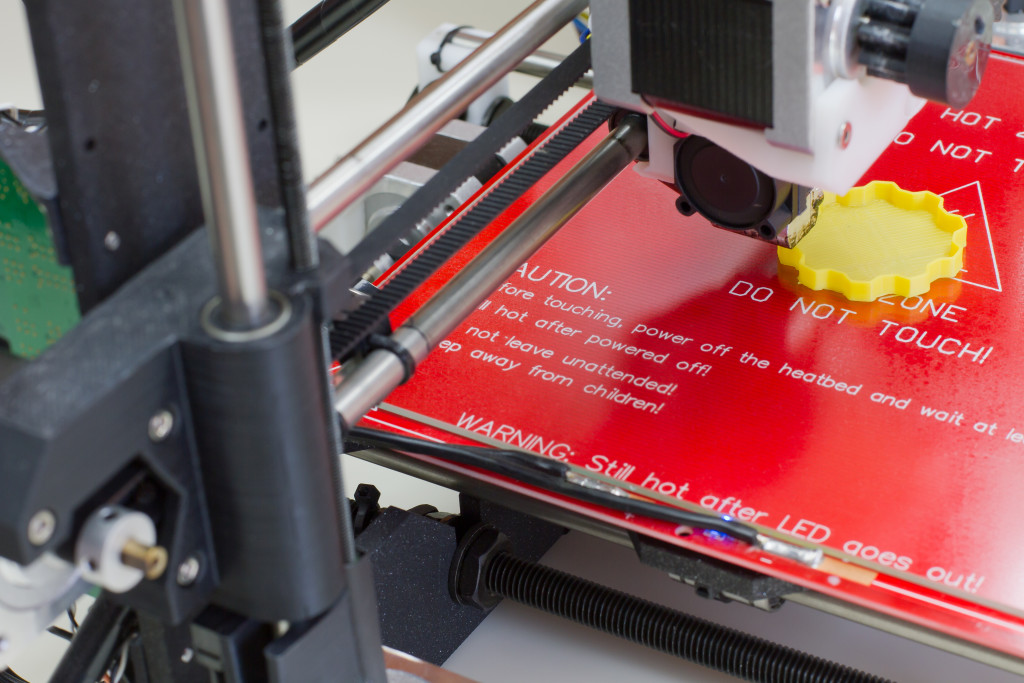
Challenge
The increased functionality and accessibility of 3-D printing technology has the potential to transform the manufacturing of firearms, for both licit and illicit purposes. To develop policy and operational strategies requires a clear understanding of this technology and its potential implications.
Approach
We reviewed academic, government, private sector, non-governmental organizations (NGOs), and news media literature relevant to the emergence of 3-D printing technology. The review identified potential implications for the manufacture of firearms, their components and ammunition, as well as for firearms legislation and policy.
Results
Literature shows that 3-D printing is an emerging, revolutionary technology that is transforming 3-D design and manufacturing. However, current anecdotal evidence suggests that 3-D printed firearms cannot withstand the same level of internal pressures that traditional firearms can withstand, thus making 3-D printed firearms susceptible to catastrophic failure or poor performance.
The Bottom Line
Although there is certainly potential risk with this technology, current research shows that it remains in the imaginary phase when it comes to establishing its impact on the firearm market as a mass production phenomenon.
Project Contact: Chris Ste-Croix
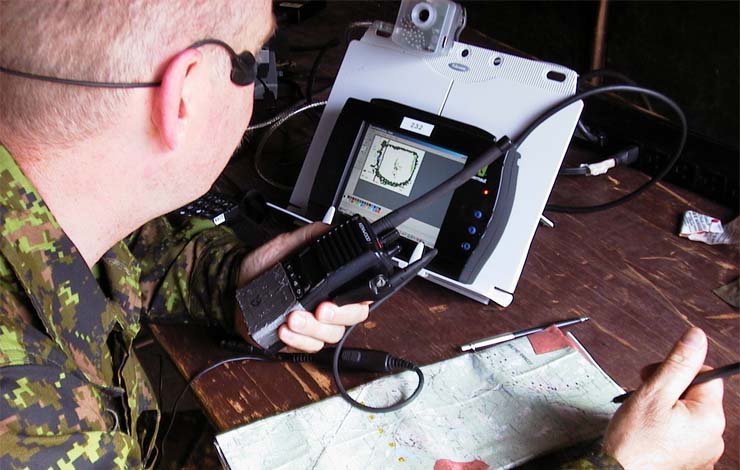
Challenge
What information do soldiers most need to have? What they can physically carry on the ground and the number of technologies they can manage is limited. Although many new technologies are available, it’s critical to know what information is most crucial to their performance and combat effectiveness. This multi-year, large scale project aimed to answer this question for our clients.
Approach
Believing that the soldier was the most critical part of the system, soldiers were the core of the assessment team. We reviewed relevant literature, created detailed plans and conducted laboratory and field experiments exploring soldier performance while they received information from existing and future technologies. The emphasis was not on the hardware itself, but on how it affected the performance of the soldiers in their environment.
Results
This work showed what information soldiers need to perform best on the modern battlefield. In addition to gaining worldwide recognition and acclaim for our clients, this work provided validated, performance-based specifications to be used for interface design, equipment acquisition, and the innovation of new technology.
The Bottom Line
Technology all too often dominates and people are made to adapt to technology, rather than building things that match how people actually work. Whatever the challenge, we have the skills and experience necessary to help you get it right the first time – save time and money by putting people at the centre.
Project Contact: David Tack
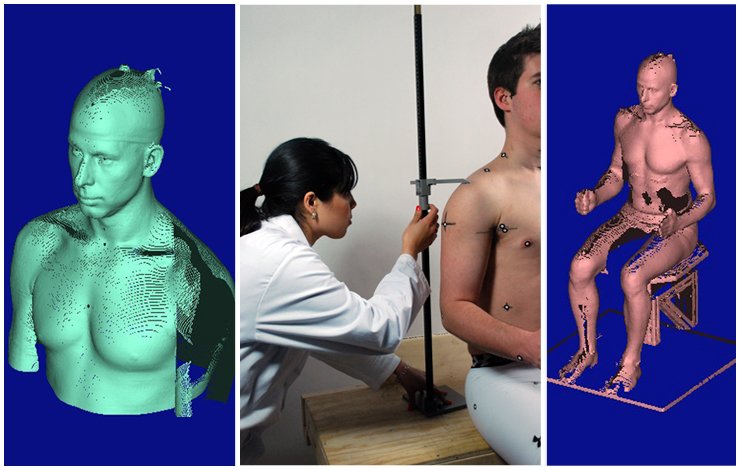
Challenge
Organizations employ workers of all shapes and sizes. Wherever they work, staff need to be physically comfortable in their workspaces (such as vehicles and offices) and with the equipment that they use (including uniforms). Our client asked for an up-to-date survey of the physical characteristics of its personnel to aid in future planning, design and acquisition.
Approach
Using state-of-the-art techniques including photogrammetry and 3D laser scans, we travelled all across Canada measuring more than 2200 staff from our clients’ organization.
Results
We provided our client with comprehensive data for over 45 anthropometric variables (e.g., average height, weight, arm length). This information will save time and money by guiding the design of workplaces, equipment, and clothing for years to come. Just as importantly, providing tailored equipment will improve the safety, comfort and performance of staff within the organization. They can now purchase the correct quantities of garments in the minimum numbers of sizes.
The Bottom Line
Whether it’s about knowing what sizes of uniforms to buy, or knowing how to make sure that people can fit into the great new system that you’re designing, we can help.
Project Contact: Harry Angel
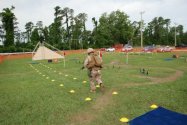
Challenge
Like personnel in other occupations (e.g., firefighters), soldiers must wear and carry considerable loads. An overloaded soldier may experience heat stress, fatigue, injury and show diminished performance. Our client wanted help to quantify the impact of weight, bulk, and stiffness on soldier combat performance.
Approach
We first reviewed the literature relevant to load carriage (e.g., biomechanical, physiological, and psychological research). We also examined research related to marksmanship and obstacle course performance to identify best practices in the assessment of combat performance.
Results
Protecting the well-being and performance of soldiers is only possible if we know how much they can safely carry while still performing proficiently. Our work culminated in a state-of-the-art review showing current knowledge about the performance of soldiers under various forms of load with respect to three load parameters (weight, bulk, and stiffness). Our reviews showed many critical gaps in knowledge.
The Bottom Line
Knowing what’s already been tried is critical to the most effective use of resources. We save you money by learning about best practices before heading into a complex area of research.
Project Contact: Alison Kelly

Challenge
First responders (e.g., police, fire and ambulance) and first receivers (e.g., nurses) are often exposed to traumatic stress, sometimes leading to post-traumatic stress disorder (PTSD) and high rates of illness and suicide. However, many emergency services lack the structures and internal expertise to deal with this serious problem. These organizations need well-grounded information about what they should be doing to protect their staff.
Approach
We systematically reviewed existing literature to identify proven prevention and treatment methods to support organizations assisting personnel exposed to traumatic stress.
Results
We provided first responder/receiver organizations with clear evidence-based guidance about what works and what doesn’t when preventing and treating traumatic stress and PTSD.
The Bottom Line
Although there is increasing recognition of the negative impacts of PTSD, there is also lots of conflicting evidence for how it should be treated. We work to simplify the complex information that’s out there, and to make it accessible and usable to whoever needs the information.
Project Contact: Bob Webb
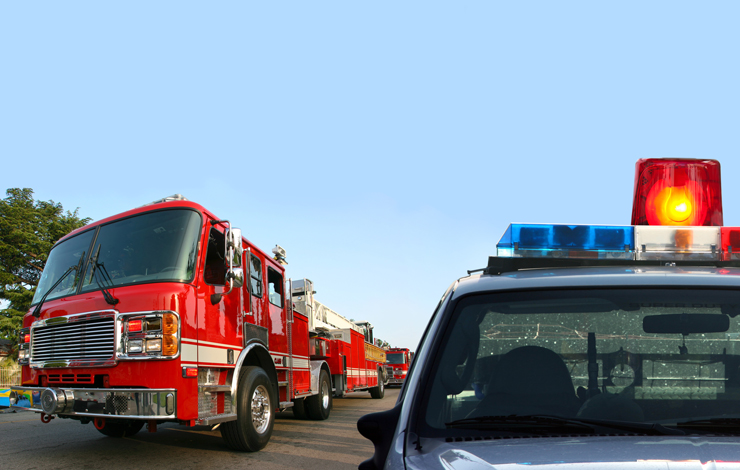
Challenge
Help first responders (police, fire, ambulance, emergency managers) share critical information and coordinate during routine emergencies.
Approach
We worked with emergency response agencies and their dispatchers on their challenges for effective and timely sharing of critical emergency incident information. We focused on coordination of different emergency agencies when working together during a single incident. We used realistic scenarios to interview front line responders and reviewed past reports and case studies.
Results
Recommendations for strategies that improve information sharing, decision making and coordination. We also recommended program measures to track improvements.
The Bottom Line
Teams with different roles often have to work together on complex challenges to achieve a common goal. Differences in culture, training, jargon, rules, technology, goals, procedures or even shift-schedules can interfere with timely and accurate sharing of critical information. HSI® can help you identify and overcome challenges facing your teams.
Project Contact: Bob Webb
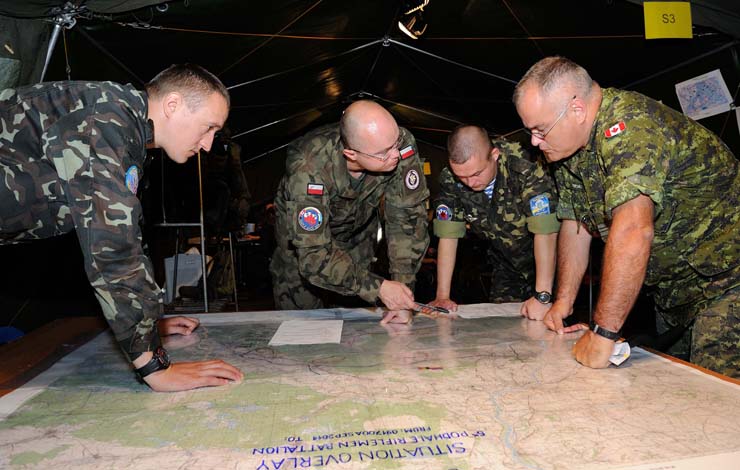
Challenge
Senior military officers prefer to command and lead their soldiers from wherever they can best visualize and influence the battlefield. Current restrictions on communications connectivity and bandwidth makes leading from the front challenging. This makes it important to know what information is most critical to leaders in order to design, build and provide the best collaborative tools possible.
Approach
To help understand and define the informational requirements of Commanding Officers while in battle, we conducted a series of interviews and analyses with past, present, and future Commanding Officers.
Results
Our work resulted in identification of a number of potential tools to aid Commanding Officers to command and lead their troops effectively and efficiently when they were away from their main headquarters.
The Bottom Line
All leaders who exert command must have the best available tools and systems to support their effective work. As leaders are increasingly required to work in distributed environments, understanding how best they can collaborate and communicate with their staff is critical. Great communication saves both time and money. We can help by understanding the problem from the ground up, and with people at the centre.
Project Contact: Harry Angel

Challenge
Working collaboratively despite being in different locations is common in today’s organizations. Technology helps compile and analyze information across locations. The key is defining the needs of the organization and understanding the tools that best meet those needs. We explored collaboration tools to be used in gathering military intelligence for our client.
Approach
With the help of subject matter experts, we developed a list of criteria against which commercial tools could be assessed. We then searched, tested, and evaluated various commercially-available software programs against these various criteria.
Results
We provided our clients with a list of currently available software tools that allowed them to understand how each met their needs for working in a distributed, collaborative environment. Our recommendations for key features of these programs allowed our clients to define the elements that were most important to them.
The Bottom Line
Wherever people must share information to be effective, we can help determine what will best meet their needs.
Project Contact: Andrew Morton

Challenge
Our client asked us to help describe the functional requirements of an all-source intelligence centre as a first step to working to design future intelligence centres and to improving how they function.
Approach
Interviews of subject matter experts, reviews of doctrine, and the application of systems analysis techniques, such as Cognitive Work Analysis and Enterprise Architecture, were used to define and understand the functional requirements of multi-source intelligence centres. Focus groups were then held to validate the analysis results with a larger sample of the intelligence community.
Results
The analytical products informed a larger program of research working to modernize the organization, processes, and tools of multi-source intelligence centres.
Project Contact: Andrew Morton

Challenge
Trust is a critical ingredient in high performance teams. We supported our client in a multi-year program of research exploring the dynamics of trust in high risk military teams, and how trust can be best facilitated.
Approach
Our work included developing new ways to measure trust, state-of-art reviews of best practices, and both field and laboratory testing.
Results
This work culminated in pragmatic advice for building and maintaining trust even in highly volatile conditions, and an easy-to-use handbook for senior military commanders.
The Bottom Line
Knowing how to manage issues of trust is critical. Although the nuances of trust in workplaces may vary somewhat, trust within team is based on competence, integrity and concern. Need to know how to manage trust in your workplace? We can help.
Project Contact: Michael Thomson, Bob Webb
DESIGN & DEVELOP

Challenge
Unique occupational demands can make workers particularly prone to certain injuries. For example, aircrew members flying Griffon helicopters must wear heavy helmets and equipment (e.g., night vision goggles). They report higher than average incidence of cervical spinal injuries. Our clients asked us to help quantify the physical demands faced by aircrews during their missions as a first step to reducing injuries.
Approach
We analyzed the tasks that aircrew members must perform and the physical demands of these tasks, throughout a range of different combat missions. This allowed us to design and develop a biomechanical model using motion capture that was used to quantify the physical stresses they face when doing the different parts of their jobs.
Results
Our client is one step closer to knowing how best to reduce the risk of neck strain and prevent injuries that can ground or debilitate their aircrews in the future. We developed a unique mission/task-based model for analyzing acute and chronic physical demands in any demanding job and environment. This model can now be used to assess both design and administrative methods for reducing these demands.
The Bottom Line
Work-related injuries are both harmful and costly. Whether heavy lifting, repetitive motion or other physical stressors, we can help with quantifying actual physical stresses on the body and pinpoint problems to support well-being and performance while reducing the risk of injury.
Project Contact: Dave Tack

Challenge
To counter the impact of improvised explosive devices on military convoys, we developed a scale that measured team threat detection and assessment as well as designed a perceptual judgment task.
Approach
The scale was administered through a bird’s eye view observation technique during simulated pre-deployment training exercises.
Results
Results provided concrete ways in which team communication, coordination, and cooperation and overall team performance (i.e., accurate detection of threats) could be improved.
The Bottom Line
Teams work effectively when communication is shared, when members are coordinated, and when cooperation is the central focus. With our knowledge and experience, we can help your team perform optimally.
Project Contact: Michael Thomson
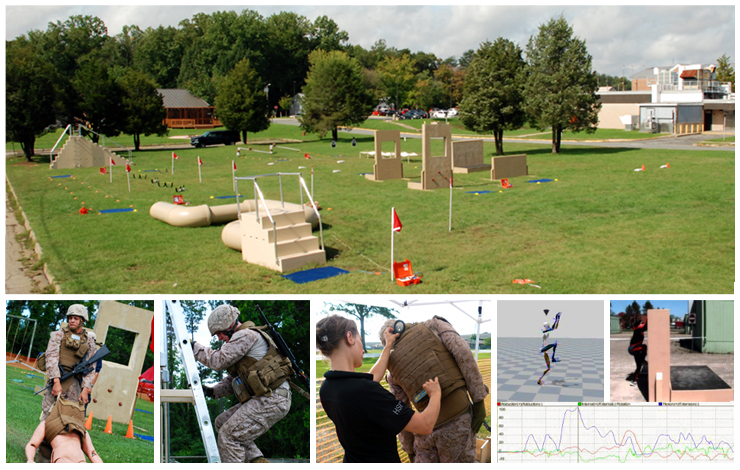
Challenge
Our client (the U.S. Marine Corps) wanted to quantify the effects of the infantry Marine’s loads (i.e. everything they wear and carry) on combat performance. As no comprehensive, valid, and reliable systems to assess soldier performance under load existed currently, we were tasked to build a system that would do just that.
Approach
Marine Corps subject matter experts provided input in focus groups and interviews about critical combat tasks and key performance indicators. Workshops explored possible obstacle course elements and critical tasks; these were downselected in an iterative and systematic process. Eventually, obstacles were physically constructed, and subsequently verified and validated.
Results
We designed a transportable instrumented obstacle course capable of systematically and scientifically determining the effects of worn and carried loads on Marine mobility and combat performance. This program was named the Marine Corps Load Effects Assessment Program (MC-LEAP).
The Bottom Line
Whether in manufacturing or in firefighting, knowing how workers will perform under varying conditions is critical to protecting their safety and well-being. Our approach is transferable to any problem, ranging from exposure to heat or cold, repetitive tasks, or high stress environments.
Project Contact: Alison Kelly

Challenge
Helmets are an important way to keep soldiers safe. As technology continues to emerge, there is an increasing need to integrate many different capabilities into future helmet systems (e.g., enhanced protection, sensing, information display, and communications technologies). Our clients asked us to empirically determine the most promising headwear integration concept to enhance the survivability and effectiveness of future soldiers.
Approach
We used an interactive and iterative design process to develop, evaluate and demonstrate new concepts in helmet design. These developmental stages progressed seven head borne concepts, to four digital models, to four physical and functional prototypes.
Results
This work will hopefully inform the design of future helmet systems, helping soldiers to perform optimally and to return safely from their missions.
The Bottom Line
This project is a great example of how new equipment or technology should be tailored to the person to ensure maximal effectiveness. In our view, it all begins with asking “What does this person need to do in their job?” and working to build the systems that best support their roles.
Project Contact: Edward Nakaza
TEST AND EVALUATE

Challenge
Assault climbers in the United States Marine Corps operate in cold, extreme cold, mountainous and icy environments using various equipment ensembles. Our clients asked us to assess the suitability of the current Mountain Assault Climbers Kit (MACK) items and possible future items to ensure that assault climbers have the best possible equipment.
Approach
Twelve assault climbers as well as professional mountaineering and alpine guides completed a series of tasks while testing and evaluating different equipment items and ensembles. Tasks included snow and ice activities on a glacier, steep earth activities, and river crossings. Focus group sessions, observations, participant comments throughout the trial, and review of existing standards, were also used to assess the current MACK kit.
Results
This effort allowed our client to compare for themselves what kit would work best in real-life conditions. We provided future requirements related to functional, design, usability, and maintainability of equipment.
The Bottom Line
Providing people with the best tools available is an important way to keep them safe and to help them be effective. Knowing how equipment stands up under heavy use can also reduce long-term costs. We are experts in systematic evaluation, providing strong advice about what works best for people wherever they work.
Project Contact: Dave Tack

Challenge
After building a system for the U.S. Marine Corps (MC-LEAP), we supported the design and build of another system (CAN-LEAP) modelled in the same fashion. This met the Canadian Armed Forces’ need to quantify the effects of soldier loads on performance.
Approach
This instrumented obstacle course with accessory combat task stations was used to explore the effects of different worn or carried loads on soldier mobility and combat performance (e.g., varying loads, with different rifle weights, while wearing chemical and biological protective clothing).
Results
The CAN-LEAP was shown to be a valid and reliable measurement tool that showed meaningful differences in combat mobility and performance under varying load conditions. The Canadian Armed Forces now has an excellent way to understand the impact of the loads that soldiers must carry and can adjust as necessary to find the right balance between performance and load.
The Bottom Line
Knowing how workers perform under varying conditions is critical to protecting their safety and well-being.
Project Contact: Alison Kelly

Challenge
Many workplaces require uniforms and protective gear to safeguard their staff. Military systems must also protect their personnel from hazards such as chemical or biological exposure. More than simply providing protection, though, this type of clothing must also meet the task demands of a military setting. Our client asked us to utilize advances in biological and chemical protection and clothing system design to help develop state of the art chemical and biological protective clothing targeted to changing threat levels.
Approach
To mitigate this challenge, we generated draft requirements, conducted technology surveys, and headed uniform design research. Full-scale user reviews were carried out on all prototype chemical-biological protective combat uniforms using an iterative design process.
Results
Working with a number of leading industry firms we designed and developed several prototypes of a user accepted chemical-biological protective combat uniform that offered protection against toxic hazards in an enhanced functional design. These new designs provide protection and improved performance over existing systems for the new threat levels anticipated.
The Bottom Line
Whatever the requirements of a given workplace, high-quality protection is imperative. We use a systematic process to help workers suit up properly.
Project Contact: Harry Angel

Challenge
High quality collaboration is a key need in most complex systems, and interactions between civilian and military personnel are no exception. In support of a multi-year program of research in defence, we ran a cutting-edge study that explored psychological dynamics of civil-military collaboration.
Approach
Together, civilian and military participants worked through two operational scenarios requiring collaboration and negotiation using Skype.
Results
This work showed many behaviours that contributed to collaboration (e.g., sharing power and showing respect) and several that harmed collaboration. This work resulted in strong advice about how to improve collaboration performance.
The Bottom Line
Helping people work together more effectively is critical in most work contexts. People who are open to others, know when to talk and when to listen, and who have learned how to build trust promote successful collaboration. Our team is extremely knowledgeable about how to make interprofessional collaboration work for you.
Project Contact: Michael Thomson
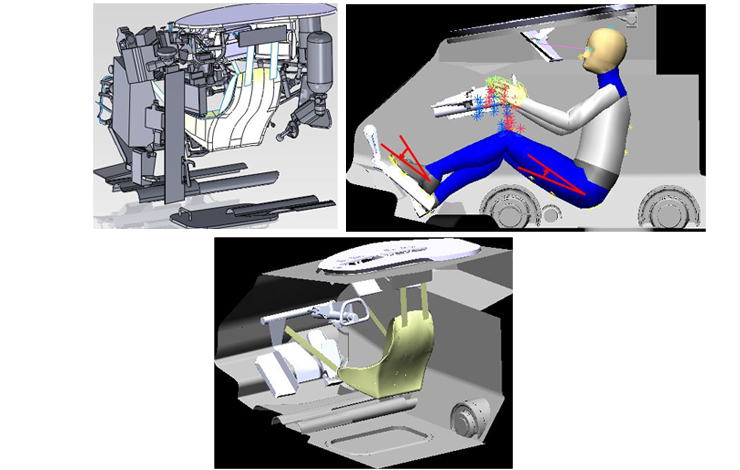
Challenge
Often modifications or upgrades are made to the interior of vehicles without considering how they affect human operators. In this case, modifications were proposed for the driver footrest of the Leopard 2 tank. The impact on the driver’s ability to safely position themselves within the tank and operate it as necessary needed to be determined.
Approach
We designed and developed a digital human model showing the impact of the modification. This model was then validated with actual users within the vehicle platform.
Results
The impact of the proposed design modifications were summarized with respect to the impact on the operator fit and accommodation, and used to help our client make design choices.
The Bottom Line
Whether changing the foot pedal in a military vehicle, altering the design of a passenger car, an airplane or train, subtle changes can impact users. Seeing the impact of a proposed change in a digital model (before spending money on implementing the design, only to see it fail) makes good business sense. We can help.
Project Contact: Edward Nakaza

Challenge
A large hospital interested in procuring new equipment needed assistance to decide which of two intravenous (IV) smart pumps would best promote patient safety and reduce the risk of errors.
Approach
HSI® worked with nursing staff to get their impressions of the two pumps and to see how easily and effectively they could actually use each of them.
Results
The strengths and weaknesses of the two pumps became evident in systematic testing. In simulated use by nurses, the pumps influenced varying rates of errors, and showed differences in the ease of use (e.g., programming). These results informed the hospital’s choice about the best pump to purchase.
The Bottom Line
Whether healthcare equipment or any type of equipment, testing with the actual user of the equipment is the only way to ensure it will work as expected. Highly usable equipment results in fewer errors, improved safety and lower lifecycle costs.
Project Contact: Bob Webb
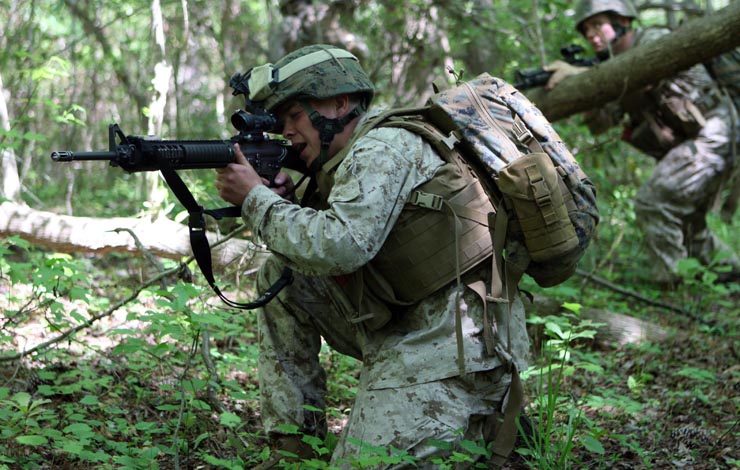
Challenge
The armour and load bearing equipment of the United States Marine Corps must meet the users and work together to help the Marine function effectively.
Approach
Testing and evaluating current and candidate equipment with real Marines doing representative tasks provided scientifically rigorous, practical information to make better choices in design, development, and acquisition.
Results
Marines were equipped with the best possible equipment by listening to the experience and expertise of the end users through systematic and controlled evaluation.
The Bottom Line
Whether your a Marine or a factory line worker, you need the right equipment and protection to do your job effectively. We are pros at examining user needs and making recommendations for improved performance.
Project Contact: Dave Tack, Harry Angel, and Andrew Morton
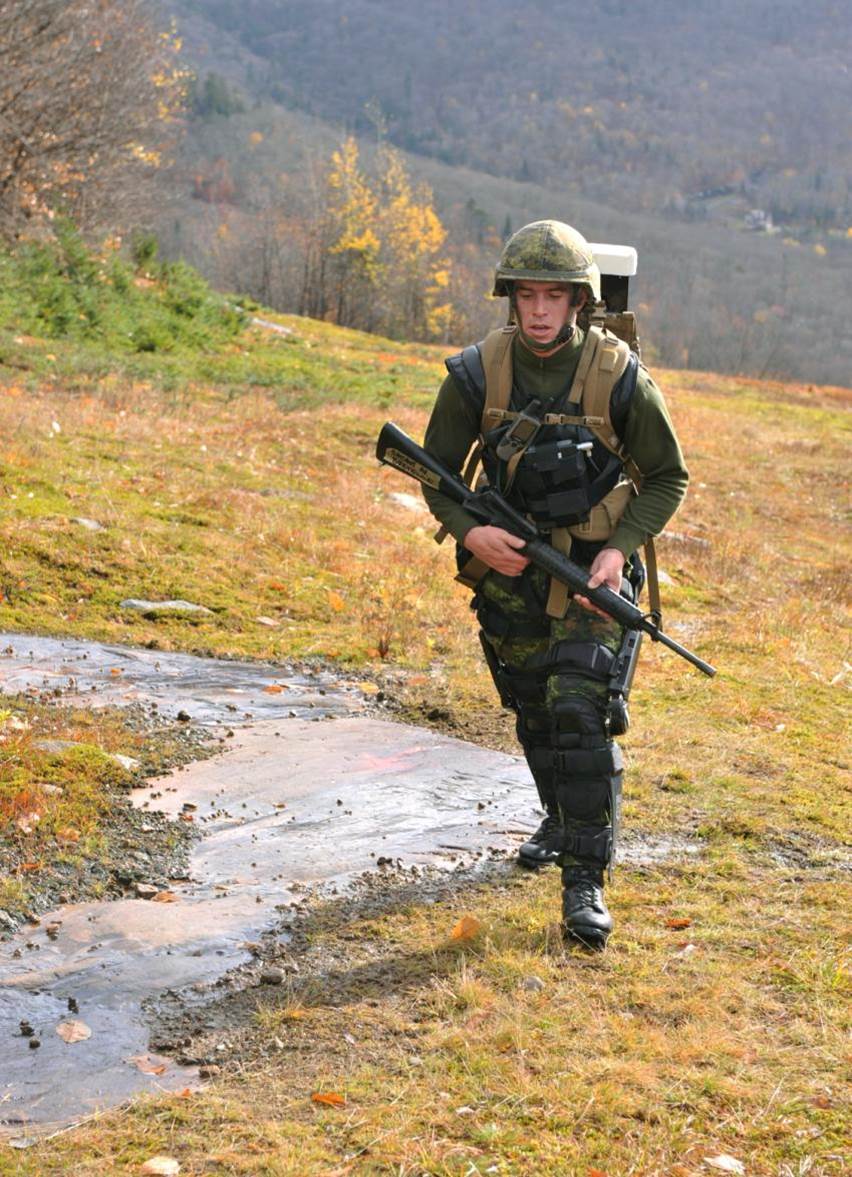
Challenge
Soldiers on the ground are often required to carry more than 50% of their body weight (more than 40 kg). Transporting these loads over long distances puts significant strain on the musculoskeletal system. Many nations have developed programs to reduce soldier weight burden. One approach involves augmentation – combining bio-mechatronics and artificial intelligence – to address weight overload.
This project involved initial testing on a new device to reduce physiological workload to assess the utility and usability of this device for soldiers in combat.
Approach
A series of controlled user tests and evaluations were conducted with subject matter experts to assess the utility and usability of the device while the subjects wore the devices during selected combat tasks. Results from each user evaluation were then implemented into the design of future versions of the device.
Results
A series of design recommendations were provided to the device manufacturer and a series of baseline measures were collected to enable performance comparisons for future iterations of the device.
The Bottom Line
Helping people to do their jobs better is what we do. Bio-mechatronics are a great technology, but it’s really about understanding what workers need to do and finding creative ways to support their performance.
Project Contact: Chris Ste-Croix
TRAINING AND E-LEARNING
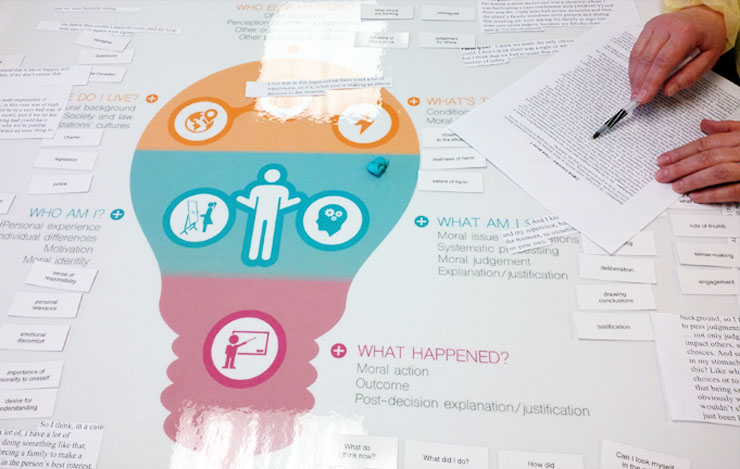
Challenge
A division of the Canadian Mental Health Association (CMHA) needed assistance developing an ethical decision-making framework and building staff capacity for making ethical decisions.
Approach
We conducted confidential individual interviews with CMHA staff to uncover their experiences making ethical decisions in their unique working contexts. We then constructed a set of processes that would promote, maintain, and evolve a culture of ethics to provide shared language across the organization.
Results
CMHA received an accessible ethical decision making framework for understanding and addressing complex ethical dilemmas faced at work. This included worksheets to help guide the process of ethical decision making and document trends, as well as frontline examples of ethical dilemmas particular to the mental health context. We then delivered customized ethics training to CMHA staff.
The Bottom Line
Ethics is core to an organization’s success. If you are interested in building your team’s capacity for ethical decision making, we’re here to help.
Project Contact: Michael Thomson
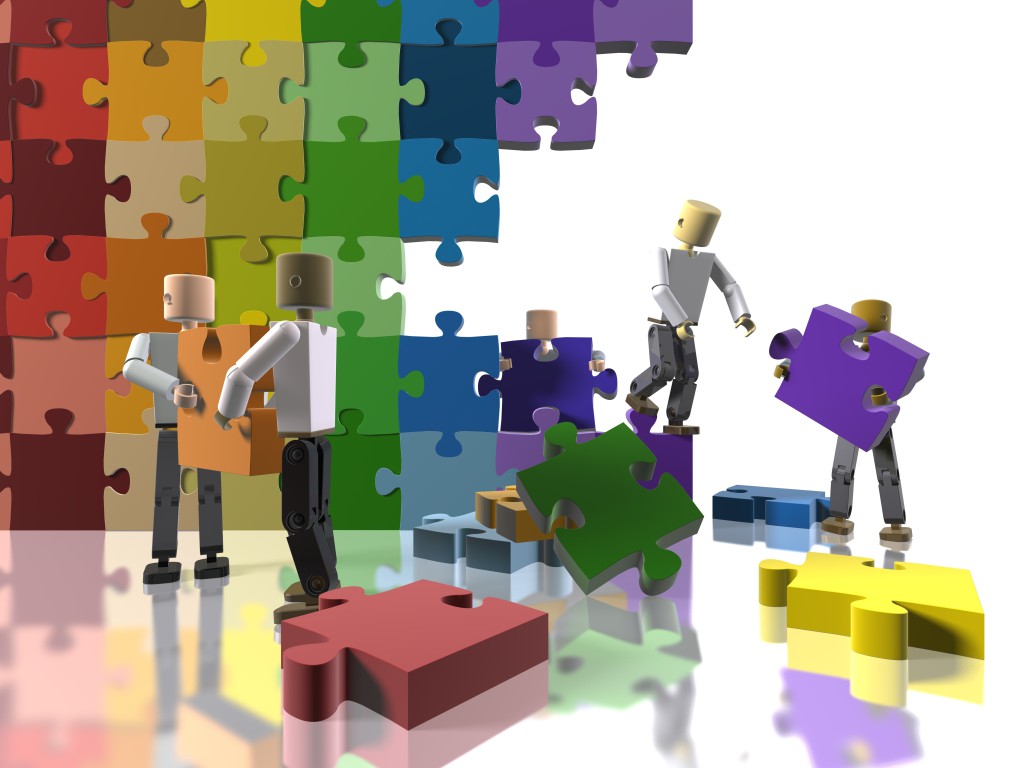
Challenge
A Fortune 500 company required teamwork training in their regulatory affairs team to maximize performance.
Approach
We conducted interviews to determine what elements of teamwork were lacking, and then designed training accordingly. Participants prototyped teamwork before identifying what elements were most critical to their working context. Through simulation, participants worked as a team and then reviewed and assessed their own activity.
Results
The regulatory affairs team identified critical elements of teamwork that would ensure they are an effective, high performing team, including building relationships and investing in leadership.
The Bottom Line
Teamwork is essential for a business’s success, but often there are gaps. No two businesses are the same. Let us help you maximize your team’s performance with dynamic and emergent teamwork training.
Project Contact: Michael Thomson
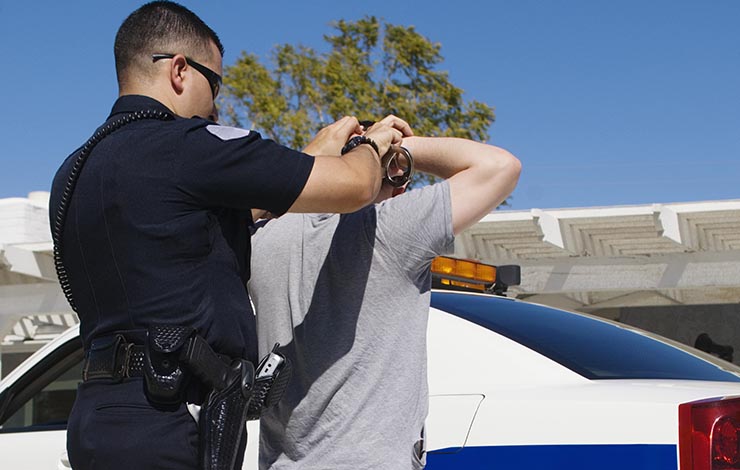
Challenge
The cost of providing up-to-date training is considerable, making it important to know the ideal balance between training too often (and wasting critical resources) and not training often enough (risking errors or safety violations). The Police Sector Council of Canada asked us to support the development of an impartial, evidence-based strategy around “Use of Force” skills (e.g., handcuffing suspects, etc.). This strategy would ensure that training occurred at the appropriate time to meet operational policing needs.
Approach
We reviewed the literature to establish best practices and interviewed instructors from police training academies, colleges, and police services to understand how “use of force” training is currently conducted.
Results
Our report culminated in a clear description of best practices from the literature, conclusions based on consultations with subject matter experts, and advice for developing a strategy to refresh critical policing skills. This advice informed national standards that would ensure the best possible use of scarce training resources and ensure the safety of front line officers. Tools have been developed that can help any organization estimate when refresher training is required or provide developers of a new product when to recommend refresher training.
The Bottom Line
Much of our work informs training – how to do it best and how to measure whether it’s actually effective. We can help you maximize your training dollars by knowing how long trained skills are likely to last.
Project Contact: Harry Angel

Challenge
Healthcare professionals must be trained effectively to ensure the highest possible level of safety and care. We were asked by St. Joseph’s Health Centre to develop a training toolkit for personnel working with seniors that addressed the six geriatric giants – falls, pain, medication review, cognition, incontinence, and frailty – as well promoting interprofessional care.
Approach
In collaboration with Dialectic Strategies, we worked with healthcare professionals to develop 6 highly innovative eLearning modules.
Results
This training provides a cost-effective and time-effective solution to reducing risks for both patients and healthcare professionals.
The Bottom Line
We have the knowledge and capability to provide you with engaging, interactive, and effective eLearning modules for your organization.
Project Contact: Michael Thomson




